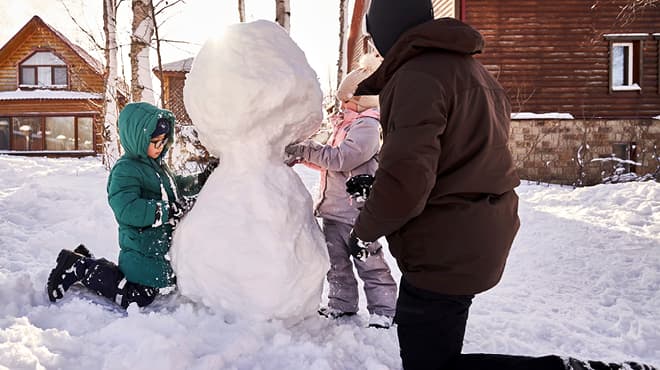Recent Posts
Preparing kids for a flu shot: Tips to help parents

Cold and flu season is approaching, and that means it's time for flu shots.
The Centers for Disease Control and Prevention and the American Academy of Pediatrics recommend flu shots for children 6 months and older to protect themselves and their friends and family from the flu. There are two options available — a shot or nasal mist — that your family can use to prevent complications from the flu, such as pneumonia and bronchiolitis.
The flu shot is safe to administer to your child. It does not cause the flu, but side effects can occur during the first one to two days, including mild soreness where the shot was administered and a mild fever or aching.
The virus can be found in your child's nose and throat, and it can be transmitted by anyone. It can spread by kissing, touching and holding the hands of other infected people. The germs can stay on surfaces for many hours, or spread through the air when a person coughs or sneezes.
The flu can change from year to year. Therefore, people do not stay immunized for more than a season. It's important to get the flu shot each year to stay vaccinated for each flu season, which runs from November to April. The flu shot is the most effective means of preventing the flu and its complications.
Honesty and distraction can help
I recommend being honest with your child that an appointment will include a shot. This can be scary for a child, but children do best when they know what to expect. The nurses in the clinic have different options to help with discomfort, including a bee-shaped device that vibrates to distract your child and an ice pack for numbing skin. Other options include a topical anesthetic spray, numbing cream and oral sugar solution for infants.
In addition to being honest with kids about needing a shot, bringing something to distract your child may help, such as a favorite video you can pull up on your phone.
While I don't always recommend a treat after a flu shot appointment, depending on the child's age, an incentive — like ice cream after an appointment — can work.
Our nursing staff is skilled at making kids feel secure and having parents as part of the process. Children will have forgotten all about it within a couple of hours of this little poke.
When is flu season?
Traditionally, flu season peaks in February, with December and March being the second and third most common peak months, respectively. This is why it often feels like flu season drags on, and many people continue to catch and spread the flu.
Healthy kids can bounce back faster than adults, but kids in day care or school often get sick more often. While this may build their immune system, it can be hard on families.
To stay as healthy as possible, I recommend that families maintain healthy habits, including hand-washing, getting plenty of sleep and eating well — in addition to the flu shot — to help prevent getting sick. This is especially important for specific populations, including infants and young children, pregnant women, the elderly and those with compromised immune systems, such as those treated with chemotherapy or an organ transplant. These groups are at higher risk for flu-related complications.
There is no reason not to get the flu shot unless your provider recommends against it. Otherwise, the benefits of the flu shot far outweigh the risk of serious illness.
To avoid the flu:
- Wash your hands and teach your kids to do the same. Wash hands thoroughly and frequently with warm water and soap. Do this before leaving the bathroom, eating or touching your face. A good rule of thumb is to wash hands for 20 seconds — about as long as it takes to sing the ABCs. Learn how to clean up your hand-washing skills.
- Cover your cough with the crook of your elbow, and teach your kids to do the same.
- Stay home from work or school if you're ill.
- Keep vaccines current for your family.
Learn more about flu prevention and treatment.
Jennifer S. Johnson, D.O., is a physician in Family Medicine in Mankato, Minnesota.






